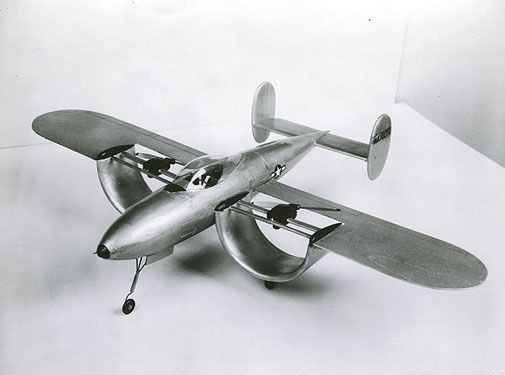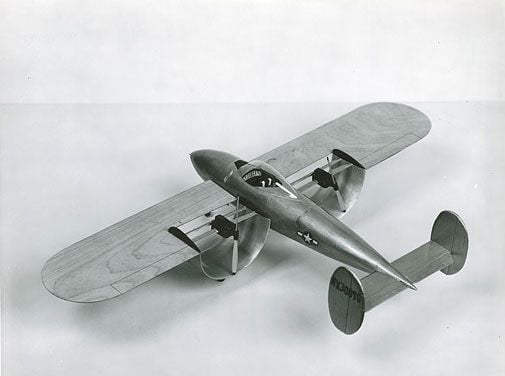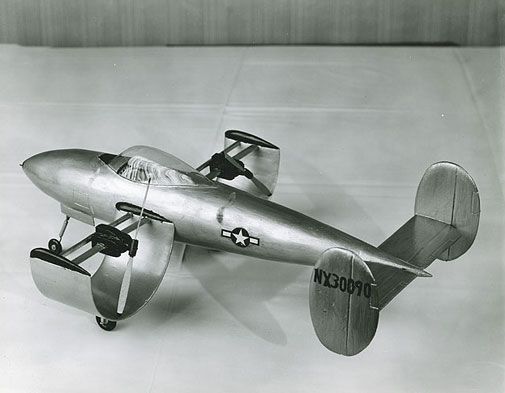Lunch With Willard
How a meeting 50 years ago solved a photographic mystery.
/https://tf-cmsv2-smithsonianmag-media.s3.amazonaws.com/filer/lunch-opener-388-may07.jpg)
At a dining table in the Goodyear Aircraft Company cafeteria, Pete D’Anna sat facing an eager aircraft designer dressed sharply in a suit, vest, and tie. The designer had come from Hagerstown, Maryland, to Akron, Ohio, to pitch a unique redesign for airplane wings—two deep channels attached onto the wings of a Baumann Brigadier.
It was the first of two face-to-face meetings in the mid-1950s between D’Anna, the manager of Goodyear’s advanced programs, and Willard Custer, an independent aircraft designer. Their professional association ultimately went nowhere.
Fifty-five years later, as a volunteer at the National Air and Space Museum, D’Anna was reminded of the meetings when Air & Space magazine appealed to him for help identifying several unidentified archival photos of scale-model channel wing aircraft. (Channel wings have semi-circular airfoils that drop down from straight wings; airflow is forced over the channels, generating very high lift). The photos surfaced while magazine researchers were seeking images for an article profiling modern channel wing research (“That Little Extra Lift,” April/May 2007).
Many photographs in the museum’s archives lack captions, leaving tantalizing gaps in the historical record. On the channel wing photos, one caption slip was torn off, and another simply read: “A small light plane of this design will have the flight characteristics of a helicopter and the glide characteristics of a conventional light plane.” Another, dating to 1947, was stamped on the back “Custer Channel Wing Corp.—Hagerstown MD.”
With those round dips in the wings, it was obvious that Custer, one of aviation’s great “what if” stories, had to be involved. The innovative wing design was his idea, and he alone had pursued it doggedly since the 1940s. He died in 1985, his decades of labor unrewarded.
The photos seemed familiar to D’Anna for another good reason—he’d seen them before in the presentations Custer had given while visiting Goodyear back in the 1950s. At the time, D’Anna was shown images of a one-third-scale model of a channel wing airplane with various wing configurations mounted on a common frame.
But how to prove the images were the same, without relying on memory? D’Anna located a 1947 issue of Aviation Week and Space Technology chronicling wing tunnel tests of Custer’s designs at the Army Air Force labs at Wright Field in Ohio. In a photo, the tail number on one of Custer’s models is clearly visible—and it matched those in the museum's archival photos.
The article describes AAF tests of various channel wing configurations in a five-foot wind tunnel. The variations had channels of the same diameter but differing chord lengths. (The shorter chords seemed to be the superior design, according to the article.) Despite promising results, the military canceled funding of the project later that year.
Custer left a lot of unanswered questions for aviation history. He pursued avenues of aerodynamics that were groundbreaking and full of potential, but his designs never got off the ground on a commercially manufactured airplane. The cause of the failure depends on whom you talk to—some say it was his abrasive personality, or claim professional rivalries ruined his ambition, and others maintain his lack of academic training limited his ability to explain why his strange designs worked.
D’Anna describes Custer as a smooth talking salesman with a good grasp of aeronautics, but a lousy habit of not providing data beyond small reports, photos, and brochures he used while trying to sell the designs.
“He struck me as a back-of-the-envelope type,” D’Anna recalls. “I’ve seen a lot of very good back-of-the-envelope guys before, and I was willing to give him the benefit of a doubt. But we couldn’t pin him down.”
The converted Baumann Brigadier executive aircraft that Custer was pitching to Goodyear, designated CCW-5, flew in July 1953. Custer’s test flight and results were promising, but D’Anna needed more. “I said it was a good start, and asked when I would see the meat of the test data,” D’Anna says. "What I got was a lot of beating around the bush. I said, ‘Before I can recommend that the company commit to this as a viable program, I ought to know a little more about what your airplane can do.’ ”
Custer also passed on opportunities to prove his ideas in tests designed by Goodyear. D’Anna himself sketched out some trials for channel wing aircraft, keeping in mind the limits of Custer’s company’s budget. Using space near Goodyear’s offices in Ohio, he arranged a simple test during which Custer’s airplane model, as it rose, would drop a bag of flour, a measure of how quickly the model got airborne. “I was trying to be economical for them,” says D’Anna, who sympathizes with small companies trying to do big things “because over the years I worked for some.”
One aspect of the Custer mythos—the inadequacies of his high school education—did not jibe with D’Anna’s impression. “I could tell he had been pretty well versed in the lore of aerodynamics,” notes D’Anna, who retired from the aviation industry and started donating his time to NASM in 1989. “He was a very pleasant guy to be around, a real personality sales type.”
Goodyear decided Custer’s channel wing did not represent a good business opportunity. D’Anna does not pretend to understand why the designer was so uncooperative: “Who knows? That’s Custer.”
D’Anna is searching his personal archives for notes or mementos from his meetings with Willard Custer but has not yet found any. It just goes to show: You never know where the capricious eye of history will one day linger. In a handful of decades, a business lunch can become history, and the person across the table, a legend.


